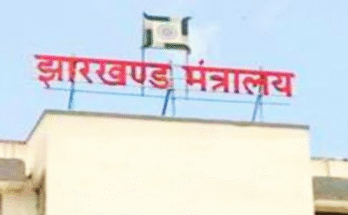Guwahati : In a bid to reach carbon neutrality by 2060 and showcase a technological marvel to the world, China has launched the construction of a massive hydropower dam in Tibet. However, the move has triggered growing concerns and protests from Tibetans as well as from neighboring countries India and Bangladesh.
On July 19, Chinese Premier Li Qiang attended the groundbreaking ceremony of the Medog Hydropower Station on the Yarlung Zangbo (known as the Brahmaputra in India) in the Tibet Autonomous Region. Beijing has promoted the project as the largest hydropower initiative in the world, with an investment of USD 167.8 billion and an expected output of nearly 300 billion kilowatt-hours of electricity annually. The project is also projected to generate about USD 3 billion in annual revenue for the Tibetan region.
While China had already built and commissioned several smaller dams along the Tsangpo River, the sheer scale of the Medog project has drawn sharp reactions. Environmental and geopolitical concerns have been raised by downstream nations like India and Bangladesh. Simultaneously, Tibetans—both inside Tibet and in exile—have begun voicing their opposition.
Tibetan Buddhists and activists argue that these large-scale dam projects threaten the fragile ecology of the Tibetan plateau. They warn that altering the river’s natural flow could disrupt not only the environment but also their cultural and spiritual life, deeply rooted in the region’s landscapes and waters. The construction, they fear, could destroy traditional livelihoods such as farming, herding, and river-based economies.
Protests by Tibetans against the hydropower projects have led to thousands of arrests, especially in regions with large Tibetan populations. Activists accuse the Chinese Communist Party of ignoring local voices and exploiting Tibet’s resources under the guise of development, thereby intensifying calls for genuine autonomy and preservation of their religious, cultural, and political identity.
Despite the backlash, Beijing continues to push forward with its resource extraction agenda across the Tibetan plateau—an ecologically vital region often referred to as the “Third Pole” due to its vast glacial reserves. This area feeds some of Asia’s most important rivers, including the Indus, Ganges, Brahmaputra, Mekong, Irrawaddy, Salween, and Yangtze, which collectively support over 1.5 billion people across countries like India, Pakistan, Bangladesh, Myanmar, Laos, and Vietnam.
Experts warn that China’s aggressive hydropower development in this seismically active zone could have catastrophic consequences in the event of an earthquake, especially for populations downstream.
In response to the criticisms, China’s Ministry of Foreign Affairs, on July 23, asserted that the Medog project falls “fully within China’s sovereignty” and is intended to accelerate clean energy growth and address climate change. However, Tibetan exile groups in India challenged this claim, arguing that the sovereignty narrative is a means to suppress Tibetan rights and monopolize the region’s natural resources.
They also questioned China’s assurance that the dam would not significantly impact downstream nations, demanding independent verification of the project’s environmental and seismic safety evaluations.
Earlier, the South China Morning Post published an editorial emphasizing the need for transparency in such mega-projects. The paper called the Medog dam “one of the most extraordinary infrastructure projects in the world” and suggested that, if handled diplomatically and transparently, it could promote goodwill and benefit water-dependent economies in South Asia, including Nepal, Bhutan, India, Bangladesh, and Myanmar.
Still, a lack of openness about the dam’s design, long-term ecological impact, and disaster management plans continues to fuel anxiety—not just among Tibetans, but also in downstream regions in India and Bangladesh.
Observers argue that both New Delhi and Dhaka must engage proactively and jointly raise the issue with Beijing before the situation escalates further. Given the potential scale of regional impact, time is of the essence.




